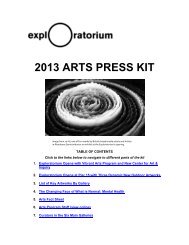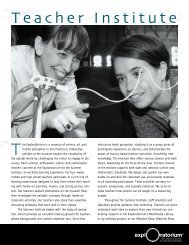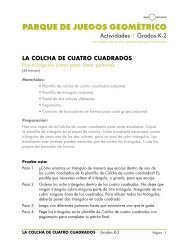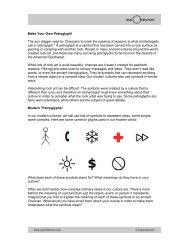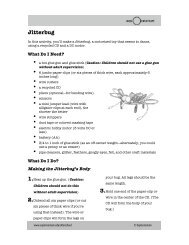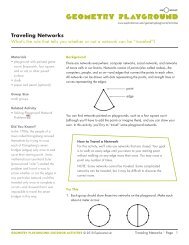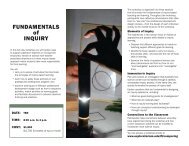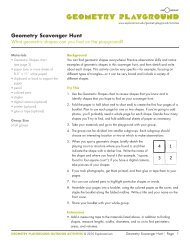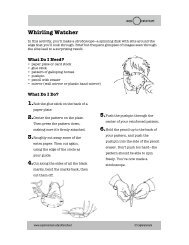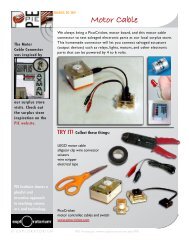Modeling the Seasons Students model the seasons ... - Exploratorium
Modeling the Seasons Students model the seasons ... - Exploratorium
Modeling the Seasons Students model the seasons ... - Exploratorium
Create successful ePaper yourself
Turn your PDF publications into a flip-book with our unique Google optimized e-Paper software.
Setting up <strong>the</strong> Room<br />
Use one bright lamp for <strong>the</strong> whole group or flashlights for small groups. Designate some<br />
visual reference as Polaris, <strong>the</strong> North Star. All straws should point to Polaris throughout<br />
<strong>the</strong> activity.<br />
Set up <strong>the</strong> light in <strong>the</strong> center of <strong>the</strong> group or flashlights in <strong>the</strong> center of each small group.<br />
Before darkening <strong>the</strong> room, make sure all earth <strong>model</strong>s are oriented correctly toward<br />
polaris. Darken <strong>the</strong> room.<br />
To Do and Notice: Model a “Day” on Earth<br />
Each student should turn <strong>the</strong> straw so that <strong>the</strong> earth spins counterclockwise (when<br />
viewed from <strong>the</strong> north) for one rotation. They should notice that <strong>the</strong> dot is in light (day)<br />
for about half of <strong>the</strong> rotation and is in shadow (night) for about half of <strong>the</strong> rotation.<br />
<strong>Modeling</strong> <strong>the</strong> <strong>Seasons</strong><br />
Divide <strong>the</strong> class into four groups. Have each group move to one of <strong>the</strong> four seasonal<br />
positions around <strong>the</strong> lamp (or one student at each position around a flashlight if using<br />
small groups): December 21, March 21, June 21, and September 21. It should look like<br />
this if seen from above:<br />
Have each group <strong>model</strong> a day at each position. At each position, <strong>the</strong>y should notice:<br />
• For what fraction of <strong>the</strong> day is <strong>the</strong> dot in <strong>the</strong> light? More than half? Less than<br />
half? About half?<br />
• For what fraction of <strong>the</strong> day is <strong>the</strong> North Pole in <strong>the</strong> light?<br />
• How is <strong>the</strong> light from <strong>the</strong> sun striking <strong>the</strong> dot? Is it direct or at an angle?




